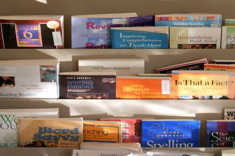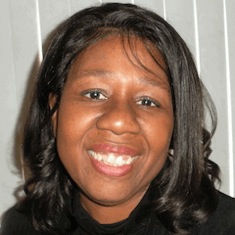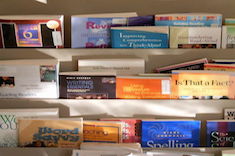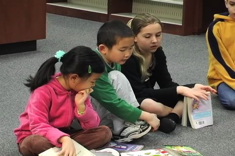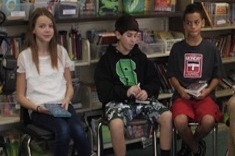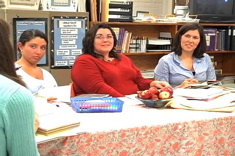Tracie and Shelly were absolutely beaming! Their first professional book club as the literacy coaches at Wilson School was an undeniable success. The teachers had agreed to meet before school once a week to read and discuss a chapter of Comprehension Connections (McGregor, 2007). That meant waking up early, dropping their drowsy children off at the sitter's house an hour earlier than usual, and doing their preparation for the day of instruction after school along with all of their regular after-school tasks. Now, two months later, at the eighth and last meeting of the book club, the teachers were talking about which book to read next!
What made this book club such a success? Was it the steaming cups of gourmet coffee? The fresh bagels? Tracie and Shelly's warm and friendly smiles? While these all may have been contributing factors, I think the key to this book club's success was the book selection. Tracie and Shelly selected Comprehension Connections, which has a constellation of qualities that makes it a perfect choice for a professional book club book, especially a first book club of the year. It is:
- Short — only 107 pages. There is lots of white space, and there are plenty of photographs. A teacher flipping through the book won't be frightened off.
- Written in teacher-friendly language — no dictionaries required.
- Full of ready-to-use instructional activities. These include new classroom-tested activities for teaching inferring, visualizing, synthesizing, questioning, and accessing schema.
If Tracie and Shelly had approached the teachers with a theoretical tome containing 300+ pages, most teachers would have turned and run in the other direction.
Do we want teachers to engage in rigorous scholarship? Of course we do, when they are ready for it. At the beginning of my career, I subscribed toInstructor magazine. I eagerly looked forward to getting new ideas for bulletin boards and Mother's Day projects. By the time I got to graduate school, I was a regular reader of The Reading Teacher. Today I look forward to the next issue of Reading Research Quarterly (RRQ). If someone had given me RRQ in my first years of teaching, I would have used it to line the guinea pig's cage.
Here are some great little books to get professional book clubs started in your school. Put them on your summer reading list if you haven't read them yet. As the teachers in your school develop as a professional learning community, you can take their reading to the next level.
Angelilo, Janet (2003). Writing About Reading: From Book Talk to Literary Essays, Grades 3-8.
Many teachers are stumped by how to support their students in writing thoughtfully about what they've read. In this little book (142 pages), Angelilo shows you how to engage students in conversation, then to capture in writing their thoughts just expressed verbally, and finally to polish that writing into well-crafted essays. The book includes a list of children's books which are ripe for written response.
Armstrong, Thomas (1998). Awakening Genius in the Classroom.
Armstrong proclaims that every student is a genius. All of our students possess some "genius quality" – it is our job as educators to identify and nurture it. In this little treasure (81 pages), Armstrong lists and describes the 12 qualities of genius and give teachers concrete ideas for creating a "genial climate" in our classrooms and provide our students with "genius experiences".
Ehmann, Susan and Gayer, Kellyann (2009). I Can Write Like That!: A Guide to Mentor Texts and Craft Studies for Writers' Workshop, K-6.
Ehrmann and Gayer have written the most comprehensive resource book to date for using mentor texts. The "book club" part of the book is only 61 pages. Even the most overwhelmed teacher can find time for this one. The rest of the book is an annotated bibliography including a summary, craft features, and text features. After using Ehrmann and Gayer's carefully presented suggestions, your writing workshop will never be the same.
Fletcher, Ralph & Portalupi, Jo Ann (2001). Writing Workshop: The Essential Guide.
Writing workshop can seem intimidating and overwhelming to some teachers. It doesn't help matters any that some of the professional books on this topic make the reader believe that only a "Super Teacher" could actually pull it off. Fletcher and Portalupi provide a wonderful overview of writing workshop in only 130 pages. Every teacher should be willing to try a workshop after reading this book.
Gallagher, Kelly (2009). Readicide: How Schools Are Killing Reading and What You Can Do About It.
Gallagher eloquently explains how schools are killing students' desire to read. Preparation for standardized tests, attempts to teach up to 3500 standards (K-12), and instructional practices such as "drowning great books in sticky notes" are making students turn away from reading. In this 118-page book, Gallagher doesn't just point out what we are doing wrong, he offers real solutions. The book includes a list of 101 books that Gallagher's reluctant readers loved. While he is a high school teacher, the suggestions can be applied to any classroom beyond third grade.
Johnston, Peter H. (2004). Choice Words: How Our Language Affects Children's Learning.
In only 96 pages, Johnston has revolutionized how teachers talk to children. He gives teachers key phrases ("How did you figure out?", "Let's see if I've got this right", "Thanks for straightening this out for me") that help lead children to self-regulation. I have participated in two book clubs using this book. In both groups, teachers reported that the book had a profound effect on their instructional conversations. I think it might be one of the most important books that teachers can read.
Nichols, Maria (2006). Comprehension Through Conversation: The Power of Purposeful Talk in the Reading Workshop.
One of the best ways to determine if students have comprehended what they've read is through conversations about the text. In school cultures where quiet is valued, getting students to engage in "purposeful talk" can be a challenge. This little book (104 pages) has lesson plans and lesson transcripts to get your students talking.
Tovani, Cris (2000). I Read It, but I Don't Get It: Comprehension Strategies for Adolescent Readers.
Master teacher Cris Tovani lets us in on her secrets for supporting comprehension in middle school and high school. The 152 pages include a "What Works" section at the end of each chapter with simple ideas to revolutionize your comprehension instruction. The appendix provides reproducibles to support your students in active reading and comprehension monitoring.

